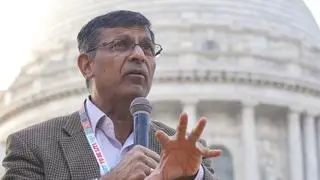The Income Tax Department has set a deadline of mid-September to complete faceless assessment of all 58,000 plus cases. Of this, as on date, over 8,700 cases have been disposed.
“The work has picked up since July, after having addressed all the issues related to infrastructure, manpower, hardware and software. Our target is to finish all the cases by mid-September,” a statement quoting Member, Central Board of Direct Taxes (CBDT) SK Gupta issued on Tuesday said.
The statement also said, 3,130 tax personnel, including 600 IT officers, are involved in implementing the faceless e-assessment scheme.
In October last year, the Income Tax Department rolled out the faceless e-assessment scheme that eliminates physical interface between an assessing officer and an assessee. Eight cities — Mumbai, Delhi, Kolkata, Chennai, Bengaluru, Hyderabad, Ahmedabad and Pune are covered under the scheme.
The National e-Assessment Centre in Delhi is the single point of contact for the taxpayer as well as for all units conducting assessment. It is the NEC which issues notices under Section 143(2) to the assesse for which the assessee is required to respond within 15 days of receipt of notice. Upon the issue of a notice, NEC allocates the case to any assessment unit through an automated allocation system, ensuring anonymity.
The conventional system of scrutiny involved a high level of personal interaction between the tax payer and the Income Tax Department officials. Under the faceless e-assessment system, the tax payer would not know by whom his /her return is being assessed or in which city. “The anonymity and the absence of human interface will go a long way in addressing the issue of harassment as well as curb instances of corruption” he said while adding under the new system, territorial jurisdiction has been replaced with dynamic jurisdiction.
More efficient system
Rakesh Nangia, Chairman of Nangia Andersen India, feels such a system is a faster and more efficient way of doing assessments in a time bound manner for those taxpayers who have simple business and transaction structures and everything is explained in simple terms in black and white, which tax officers can comprehend and complete assessments based on the same.
However, for businesses having complex structures/ transactions and having lot of documentation, may find it difficult to explain only via written submissions and lot of personal discussions may be required to explain their case and transactions, he said adding “Such cases would need special attention of tax authorities and necessary infrastructure would need to be built to enable face to face interaction between taxpayer and assessing officer, may be via video conferencing or by any other appropriate tool.”







Comments
Comments have to be in English, and in full sentences. They cannot be abusive or personal. Please abide by our community guidelines for posting your comments.
We have migrated to a new commenting platform. If you are already a registered user of TheHindu Businessline and logged in, you may continue to engage with our articles. If you do not have an account please register and login to post comments. Users can access their older comments by logging into their accounts on Vuukle.